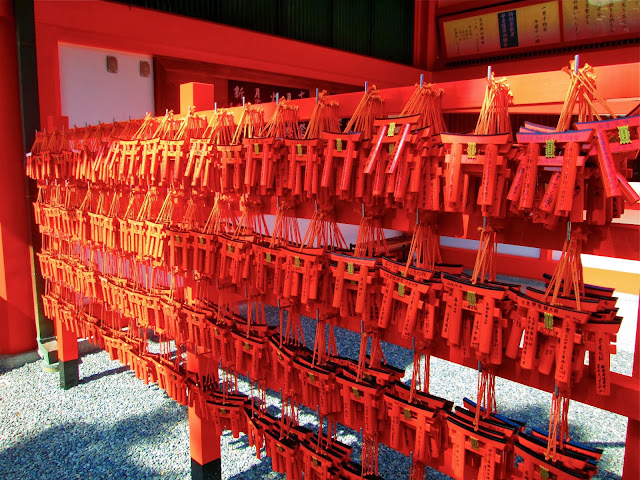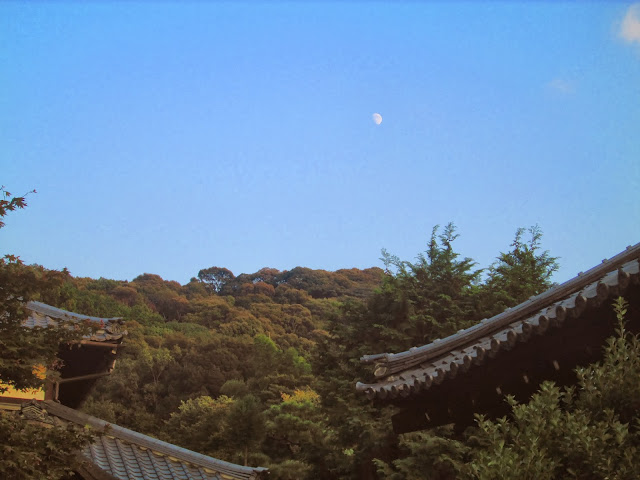On our last day in Kyoto the day dawned bright and clear. We jumped on a train to Fushima-Inari, a place I've wanted to visit ever since I saw this scene in Memoirs of a Geisha when I was 14 years old. The huge shrine complex was dedicated to the gods of rice and sake in the 8th century - but as the importance of agriculture to Japanese people declined, more deities were added for prosperity in business.
It's now the head shrine for about 30,000 Inari shrines across Japan.
Excellent Japanese map number 3.
These folded papers can be found in most shrines, but they are generally white. I think they are called shide and are often hung at the door of a shrine to prevent evil spirits from entering - if anyone can enlighten me further, please do!
Pretty happy here! The path winds 4km steeply up the mountainside and is lined with thousands of torii.
See the stone foxes? They are seen as messengers of Inari, the god of the rice harvest (and business) and are traditionally also seen as mysterious figures capable of possessing humans (thank you Lonely Planet). Torii mark the entrance from the profane to the sacred - so just imagine walking through hundred of them.
I can't wait to come back in January, hopefully this time at night or the evening, when it is apparently very atmospheric.
"Be genki, bebe."
We made our way back to Kyoto station for lunch at a sushi train place, and a taste of machi (green tea) ice cream. Unfortunately it wasn't what either of us expected, and in our hot and tired state we ended up dropping it all over ourselves in the middle of the crowds, then succumbing to a giggling fit and getting in even more of a mess. I promise we're growing into responsible adults.
Indeed.
We decided to finish the afternoon at Shoren-in in Southern Higashiyama, a temple dating from 1895, but with some beautiful 16th century paintings on its sliding doors.
You get the idea with the maps.
It was an incredibly still and peaceful evening.
Waiting for a bus, we happened upon this sight putting traffic to a halt. Dozens of young and old men carried the icon - not sure what else to call it - by hopping haphazardly (and seemingly a tad drunkenly) from one foot to the other while shouting chants. It was conveyed several times around the traffic crossing and eventually made its way up the street, followed by several men in white on horse back and the loud jingling of bells.
For our last night we got dressed up (somewhat hurriedly as you can see), found a lovely Italian place by the river, and drank shochu in a tiny izakaya in Gion.
The last picture of the trip, just before we headed back to Osaka airport. I took this, looked at it and then promptly burst into tears! However, more than one month is now down out of the five of not seeing G that I was contemplating. Time is really flying suddenly, and Christmas is fast approaching.








































































